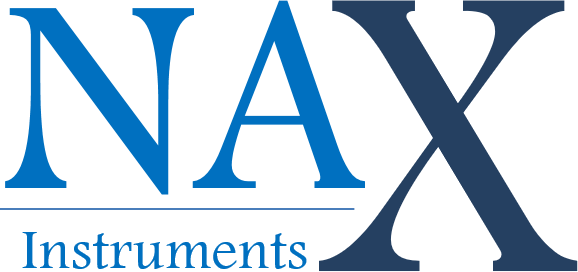In recent years, thermal cameras have emerged as indispensable tools across various industries, revolutionizing the way we perceive and interact with our environment. Utilizing advanced infrared technology, these cameras detect and visualize thermal energy emitted by objects, enabling users to identify temperature variations and anomalies that are invisible to the naked eye. From industrial inspections to medical diagnostics and beyond, thermal cameras offer a multitude of applications and benefits that continue to shape diverse fields.
Understanding Thermal Imaging Technology
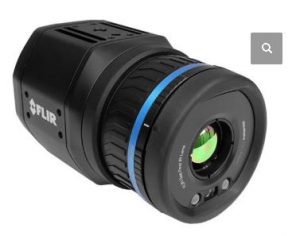
At the heart of thermal cameras lies thermal imaging technology, which operates on the principle of capturing and translating infrared radiation emitted by objects into visible images. Unlike conventional cameras that rely on visible light, thermal cameras detect heat signatures emitted by objects, converting them into thermal images known as thermograms. Each pixel in a thermogram represents a different temperature value, allowing users to analyze temperature differentials with precision.
Applications Across Industries
Industrial Inspections: Thermal cameras play a crucial role in industrial settings for preventive maintenance, detecting equipment malfunctions, and identifying potential hazards. By pinpointing temperature irregularities in machinery, electrical systems, and infrastructure, thermal imaging helps prevent costly breakdowns and ensures workplace safety.
Building Diagnostics: In the construction and building maintenance sector, thermal cameras are invaluable for detecting energy leaks, moisture intrusion, and structural defects. Building inspectors use thermal imaging to assess insulation efficiency, identify water damage, and prioritize repairs, leading to improved energy efficiency and structural integrity.
Security and Surveillance: Thermal cameras enhance security and surveillance systems by providing clear visibility in low-light conditions and adverse weather. With the ability to detect human and animal heat signatures, thermal imaging enables effective perimeter monitoring, intruder detection, and search and rescue operations.
Medical Diagnosis: In the medical field, thermal cameras facilitate non-invasive diagnostics and patient monitoring. Thermography, a technique based on thermal imaging, enables healthcare professionals to visualize temperature variations associated with inflammation, circulatory disorders, and other medical conditions, aiding in early detection and treatment planning.
Wildlife Conservation: Thermal cameras are instrumental in wildlife research and conservation efforts, enabling biologists to study animal behavior, track migratory patterns, and monitor endangered species. Thermal imaging provides valuable insights into nocturnal animals’ activities and habitats, facilitating conservation initiatives and biodiversity preservation.
Key Benefits of Thermal Cameras

Enhanced Visibility: Thermal cameras offer superior visibility in low-light conditions, fog, smoke, and dust, allowing users to see beyond the limitations of human vision. This enhanced visibility is especially advantageous in hazardous environments and remote locations where conventional cameras may fail.
Early Detection of Anomalies: By detecting temperature differentials and hotspots, thermal cameras enable early detection of potential hazards, equipment failures, and safety risks. This proactive approach to maintenance and inspection helps minimize downtime, reduce repair costs, and prevent accidents.
Non-Invasive Inspection: Unlike invasive testing methods that require physical contact or dismantling of equipment, thermal imaging offers non-destructive inspection capabilities. This non-invasive approach minimizes disruption to operations, reduces downtime, and extends the lifespan of assets.
Cost-Effective Solutions: Incorporating thermal cameras into maintenance programs and diagnostic protocols can lead to significant cost savings over time. By identifying issues before they escalate, organizations can avoid costly repairs, optimize energy efficiency, and maximize operational performance.
Versatility and Adaptability: Thermal cameras are versatile tools that can be deployed across diverse applications and industries, from industrial facilities and commercial buildings to medical clinics and wildlife reserves. Their adaptability to various environments and conditions makes them indispensable assets for professionals in different fields.
Conclusion:
In conclusion, the power of thermal cameras lies in their ability to reveal hidden insights and provide actionable data across a wide range of applications. Whether used for industrial maintenance, building diagnostics, medical imaging, or wildlife conservation, thermal imaging technology continues to push the boundaries of innovation and redefine the way we perceive our surroundings.
With their unmatched visibility, early detection capabilities, and cost-effective solutions, thermal cameras have become indispensable tools for professionals seeking to optimize performance, enhance safety, and unlock new possibilities in their respective industries.
In the field of liquid applications, precision and accuracy in monitoring flow rates are critical. Whether for industrial processes, environmental monitoring, or research, choosing the correct flow meter is critical for obtaining trustworthy data. Ultrasonic flow meters have grown in popularity due to their non-intrusive nature and adaptability. Let’s take a look at factors to consider when selecting an ultrasonic liquid flow meter.
Factors to Consider When Choosing an Ultrasonic Flow Meter
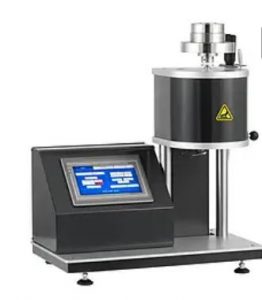
Application Requirements
Before getting into the technical features of flow meters, it’s critical to understand the application’s specific needs. Consider the type of liquid, the flow rate range, temperature, pressure, and any other external conditions. Different liquids have different acoustic properties, thus choosing the right flow meter for the task provides precise and dependable measurements.
Flow Meter Type
There are several varieties of ultrasonic water flow meters, each with its own set of benefits and drawbacks. The most prevalent types are transit-time and Doppler ultrasonic liquid flow meters. Transit-time meters measure the time it takes for ultrasonic signals to travel between transducers, whereas Doppler meters rely on frequency shifts generated by moving particles in the liquid. The decision between these types is influenced by factors such as liquid composition, pipe size, and the presence of bubbles or particles.
Installation Requirements
The ease of installation is especially important when retrofitting or modifying existing systems. Ultrasonic flow meters are typically non-intrusive and can be installed externally, eliminating the requirement for pipe cutting. However, when considering the suitability of a particular ultrasonic liquid flow meter for installation, it is critical to consider elements such as pipe material, diameter, and accessibility.
Accuracy and Range
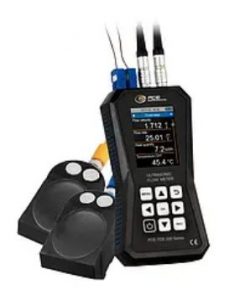
Accurate flow measurements are essential for successful process management and optimization. Although ultrasonic flow meters are highly accurate, the level of precision varies between different types of flow meters. You should consider the appropriate flow range for the meter and make sure that it corresponds to the expected flow rates in the application. Furthermore, it is essential to ensure that the manufacturer’s accuracy specifications fulfill the relevant measurement criteria.
Signal Quality and Noise Immunity
The signal quality of the flow meter is essential for the efficient operation of the flow meter. Factors such as air bubbles, suspended particles, and external noise can degrade signal quality and, as a result, will impact the measurement accuracy. It is advised to look for flow meters with advanced signal processing capabilities and noise immunity characteristics to ensure reliable and accurate readings even in challenging conditions.
Cost and Maintenance
While it is important to consider the initial cost of an ultrasonic liquid flow meter, the total cost of ownership must also be taken into consideration. You should look for factors like installation expenses, ongoing maintenance needs, and the possibility of downtime during repair. Choosing a flow meter that requires less maintenance and has a long lifespan can result in long-term cost savings.
Nax Ultrasonic Flow Meters for All Your Industry Needs
In the world of ultrasonic flow meters, Nax stands out as a reliable and trusted brand. Nax flow meters, known for their commitment to quality and innovation, provide innovative features that adapt to a wide range of applications. We have earned the trust of industries all over the world with regard to our focus on precision, durability, and ease of use. So, if you are looking for high-quality ultrasonic liquid flow meters, don’t look any further, visit our website and select the one that best suits your needs.
Calibration and testing services play an important role in ensuring the accuracy, reliability and compliance of various equipment and devices across numerous industries. Precision is of paramount importance in all industries whether it’s manufacturing, healthcare, research or any other industry. However, the effectiveness of calibration and testing mainly depends on the service provider that you choose for the specific tasks. Let’s take a look at some of the factors to consider when selecting the best calibration and testing service provider to meet your calibration and testing requirements.
Factors to Consider when Selecting the Right Calibration and Testing Service Provider

- Accreditation and Certifications
When choosing a calibration and testing service provider, the first and most important factor to consider is their accreditation and qualifications. These certificates confirm that the provider adheres to industry standards and has been subjected to thorough evaluations. For example, ISO/IEC 17025 accreditation is a globally recognized standard for testing and calibration laboratories. It ensures that the service provider has demonstrated technical competence, objectivity, and a commitment to continuous improvement. Also, there are certain certifications provided from appropriate industry bodies confirming the service provider’s knowledge in specific areas.
- Range of Services
Another important factor to consider is the selection of services. A reputable calibration and testing service provider should provide a wide range of services that cater to various industries and equipment types. The range of services includes electrical, mechanical calibration, thermodynamic and dimensional testing. This guarantees that you can rely on a single supplier for all of your calibration and testing requirements, streamlining the overall process. You should also consider whether they offer on-site calibration services in Singapore, which can be especially advantageous for minimizing downtime and operational disturbances.
- Equipment and Technological Capabilities
The equipment and technological capabilities of a calibration and testing service provider have a direct impact on the accuracy and reliability of their services. You should make sure that the selected provider uses cutting-edge technology and is up to date on recent developments in their industry. To provide precise results, modern calibration laboratories frequently use advanced instrumentation and software. This not only improves calibration accuracy but also demonstrates the service provider’s dedication to staying at the forefront of technical improvements.
- Quality Assurance and Traceability
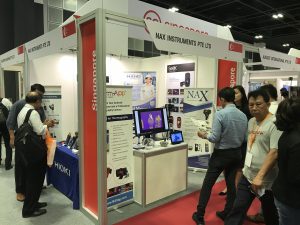
Quality assurance and traceability are two other important factors to consider when selecting a calibration and testing service provider. A reputable service provider should have strong quality control mechanisms in place to ensure the accuracy and dependability of their outcomes. Traceability is the ability to link measurements to a recognized standard, guaranteeing that calibration is performed against a known reference. You should inquire with potential service providers about their quality assurance systems and how they ensure traceability. This may include regular proficiency testing, participation in interlaboratory comparison programs, and adherence to documented processes.
- Turnaround Time and Customer Support
When it comes to calibration and testing services, efficiency is the key component. So when selecting calibration services in Singapore, you should always look for the service provider’s turnaround time – the amount of time it takes from receiving the equipment to delivering calibrated or tested findings. This is especially important if your activities are time-critical and any downtime must be kept to a minimum. Additionally, assess the calibration service’s customer support. A timely and educated customer support team can respond quickly to your questions and help streamline the entire calibration process. Look for a provider who places a high emphasis on customer relationships and is dedicated to providing outstanding service that goes beyond the technical aspects.
- Cost
While cost should not be a primary deciding factor when selecting calibration services in Singapore , it is also an important aspect. You can ask for detailed estimates from potential service providers and compare them to the value of the services provided. However, you should keep in mind that selecting a supplier based primarily on price could compromise the quality and accuracy of the calibration or testing. When determining the cost of calibration and testing services, consider the total value, which includes accreditation, the variety of services, technological capabilities, and customer support. Investing in quality services may yield long-term benefits in terms of equipment reliability and regulatory compliance.
Elevate Your Calibration and Testing with Nax Instruments
Choosing the right calibration and testing service provider is a key decision that can have a considerable impact on the performance and dependability of your equipment. At Nax Instruments, we recognize the importance of precision and dependability in calibration and testing services. Our cutting-edge facilities and commitment to quality make us a reliable partner for a wide range of businesses. We seek to exceed your expectations by providing a range of services and a customer-centric attitude. Make the best choice for your calibration and testing requirements. Choose Nax Instruments, where precision meets excellence.
In a world where technology is always developing, thermal cameras have become indispensable instruments in a variety of industries, ranging from industrial inspections and research to security and surveillance. The capacity to observe and capture thermal radiation opens up a world of possibilities, but choosing the correct thermal camera in Singapore for your unique needs is critical. Let’s take a look at the essential variables to consider when selecting a thermal camera in Singapore, which will assist you to invest wisely in a tool that meets your needs.
Factors to Consider when Choosing A Thermal Camera

- Resolution
The resolution of a thermal camera is an important feature that directly influences the sharpness of the images and videos it takes. Higher-resolution cameras produce more detailed thermal images, allowing for better analysis and identification of potential problems. When selecting a thermal camera in Singapore, you should make sure to choose one with a resolution that corresponds to the amount of detail required for your applications.
- Thermal Sensitivity
Thermal sensitivity, measured in millikelvins (mK), determines the camera’s capacity to detect minor temperature variations. A decreased thermal sensitivity implies that the camera can capture even the tiniest temperature swings, making it more effective in recognizing possible problems. It is important to choose a thermal camera with high thermal sensitivity for applications requiring precision.
- Temperature Range
The temperature measurement ranges of different thermal cameras vary from each other. It is critical to select a camera that can accurately capture the temperature range relevant to your specific requirements. Whether you are monitoring equipment at harsh temperatures or conducting building inspections, selecting a camera with an acceptable temperature range is critical for reliable findings.
- Image and Video Storage
If you need to capture and analyse a significant number of photos, you should consider the thermal camera’s storage capacity. Some cameras include built-in storage, but others require the use of external storage devices. So, assess your needs and select a camera with sufficient storage options, to enable flawless data handling.
- Ease of Use
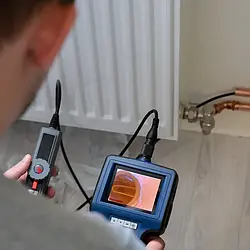
If you are new to thermal imaging technology, user-friendliness is an essential factor to take into consideration. A well-designed interface and intuitive controls may significantly enhance the productivity of your workflow. To improve ease of use, you should look for cameras that have user-friendly menus, configurable settings, and ergonomic designs.
- Portability
Portability is also an important factor to consider when choosing a thermal camera. Whether you are conducting inspections in restricted places or working in the field, a tiny and lightweight thermal camera can make a considerable difference in flexibility and convenience.
- Battery Life
The amount of time a thermal camera can run on a single charge is critical, especially for professionals operating in isolated areas or for extended periods of time. Consider the camera’s battery life and make sure it corresponds to your usage patterns. If you are looking for a thermal camera for longer field use, you can choose a model that includes interchangeable batteries.
- Integration and Connectivity
Thermal cameras with easy integration with other devices and systems increase their versatility. Look for cameras that have Wi-Fi connectivity, USB ports, or compatibility with smartphone apps. Integration capabilities can improve data transfer and overall connectivity.
- Durability and Environmental Resistance
Thermal cameras can be employed in a variety of contexts, ranging from industrial settings to outdoor locations with various weather conditions., So you should always make sure to select a camera that is sturdy, resilient, and resistant to environmental influences in order to ensure durability and dependable operation in a variety of settings.
- Price and Value
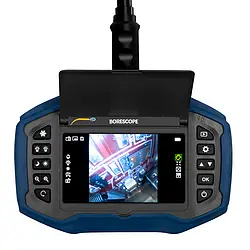
While cost considerations are vital in selecting a thermal camera in Singapore, it is critical to balance cost with the features and capabilities that correspond with your individual demands. Before purchasing the thermal camera, you should consider its entire worth, taking into account its specs, durability, and the level of support supplied by the manufacturer.
Elevate Your Imaging Experience with Nax Thermal Cameras
Choosing the right thermal camera in Singapore requires a comprehensive examination of the aforementioned elements to ensure that it satisfies the specific needs of your applications. Nax thermal cameras are well-known for their dependability and versatility, as well as their cutting-edge technology. We offer a wide range of thermal cameras including, thermal monocular cameras, firefighting thermal cameras, online thermal cameras, handheld thermal cameras and many more. Purchasing a Nax thermal camera not only ensures the precision and effectiveness of your thermal imaging tasks but also provides you with a trustworthy companion in your professional endeavours. Make the right decision and improve your thermal imaging experience with Nax Instruments.
Color is more than a visual experience in a world dominated by aesthetics and functionality; it transmits information, triggers emotions, and influences decision-making. Food, cosmetics, textiles, and manufacturing industries all rely largely on accurate color measurement to maintain product uniformity, quality, and brand identity. The ability to correctly measure color is not only an aesthetic matter, but also a functional necessity, affecting consumer pleasure and product performance. Let’s take a look at the importance of color measurement, the concepts of spectrophotometers and colorimeters, and the science behind how they precisely measure color.
What are Spectrophotometers and Colorimeters?

Spectrophotometers and colorimeters are advanced instruments used to scientifically measure color. Spectrophotometers are very versatile, measuring the full light spectrum. Colorimeters, on the other hand, focus on specific color parameters and are frequently used in quality control applications.
How Spectrophotometers Measure Color?
Spectrophotometers use two primary strategies to operate: reflectance and transmittance. Reflectance measurements include shining light onto a sample surface and measuring the amount of light reflected at different wavelengths. This method is often used for solid materials such as fabrics, paints, and polymers.
Transmittance measurements, on the other hand, entail passing light through a transparent or translucent sample and measuring the amount of light that emerges on the other side. This method is extensively used in the analysis of liquids, films, and glass.
The interaction of light with the sample is the fundamental principle underlying both approaches. The spectrophotometer divides light into wavelengths, passes it through the sample, and measures the intensity of the transmitted or reflected light at each wavelength. The resulting spectrum is subsequently examined to quantify the sample’s color properties, which are frequently stated in terms of colorimetric values such as L*a* b*.
How Colorimeters Measure Colour
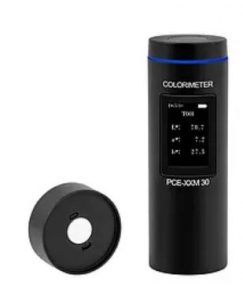
Colorimeters, while similar in concept, take a more specialized approach to color measuring. They are intended for specific applications and are easier to use than spectrophotometers. The measurement procedure consists of three major steps: illumination, light detection, and data processing.
- Illumination: Colorimeters emit a controlled light source onto the sample surface. The type of illumination used depends on the application and the qualities of the sample.
- Light Detection: The colorimeter measures the intensity and color of the light reflected or transmitted by the sample. The detector collects light and turns it into electrical impulses.
- Data Processing: The electrical impulses are then processed to calculate color parameters based on established color models. RGB (Red, Green, Blue) and L*a*b* are two common color spaces.
Nax Colorimeters and Spectrometers for Optimal Color Consistency
Colorimeters and spectrophotometers both play critical roles in assuring color accuracy across a wide range of industries. Nax colorimeters and spectrophotometers are excellent alternatives for individuals looking for precision and dependability in color measuring. Whether you are in the textile, paint, or food industries, investing in Nax colorimeters and spectrophotometers ensure that your products satisfy the highest standards of color consistency, Embrace the science of color measurement and improve your product quality with modern spectrophotometers and colorimeters from Nax Instruments.
